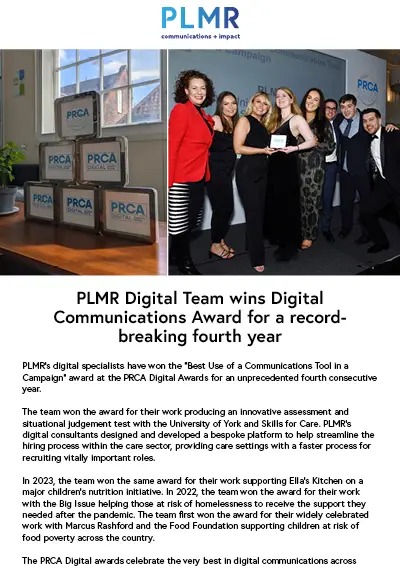As a visual and audio media platform, broadcast is great opportunity to bring your story to life in an accessible and engaging way.
However, this distinct format can also pose some challenges when developing a tailored pitch for broadcast journalists.
The following tips will give your pitches an edge to help you present the right narrative, to the right people, at the right time.
Preparation is key
Before writing your pitch, it is important to gather all the necessary information to help you set up a successful interview with producers. Pin down the availability of your spokesperson and, if possible, establish a list of other people who might be able to provide additional comments. Ensure that all suggested interviewees are ready to be interviewed at short notice during the times you have agreed. They should also be seated in a quiet place with a neutral background to speak to the interviewer. Make sure they are thoroughly briefed on the subject they are talking about, including on potential questions that they may be asked in response to their personal experience or expertise.
Position your story in the here and now
The news cycle is notoriously fast-moving. To keep up with this pace, you must make clear how your proposed story is relevant to audiences on the day/week of pitching. Capitalise on the key stories that are dominating the news cycle or building momentum (e.g. social or political news, public holidays etc.) and outline how your story is relevant to the chosen news item.
When it comes to actually writing your pitch, summarise how your story can shed new light on the topical news in one pithy sentence towards the beginning of your pitch. Writing your pitch in the present tense will also help to communicate the relevance of your story.
Make your pitch visual
Always take into consideration the format of the outlet that you are pitching to. Stories on television and radio tend to focus on the visual and narrative aspects of a story, so your pitch must help journalists to imagine how the feature will look or sound. To make this as clear as possible, outline where the interview will take place, who the interviewee is and what additional activity they could be recorded doing. Attaching a supporting image or brief clip to your pitch will further demonstrate how your spokesperson performs on camera and help to bring your proposed story to life.
Keep it short and sweet
Broadcast stories tend to range from 20 to 90 seconds so pitches must be equally top-line. Not only does a concise pitch demonstrate an awareness of this time restraint, but it is also more likely to hold a busy journalist’s attention. Consider your pitch as an initial introduction through which to ignite an outlet’s curiosity: you can elaborate on elements of the proposed story once you have secured initial interest.
Whilst smart wordplay and numerous supporting statistics can prove popular with press journalists, this is best avoided for broadcast as it can slow the pace of the pitch and become a distraction.
Pick your audience wisely
For maximum impact, pitch your stories to producers, editors, and planning researchers. These individuals, who are often grouped on the ‘planning desk’, are responsible for selecting the stories that will be broadcast. As such, building a healthy rapport with this team is a great way of gaining insights about a station’s editorial focus for the coming week or month.




